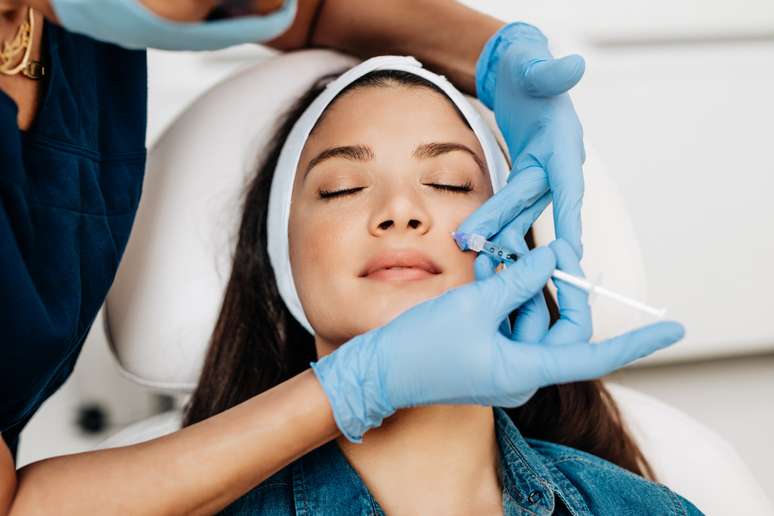Collagen levels drop by 30% in the first five years of menopause
html[data-range=”xlarge”] figure image img.img-101f9e3748f4195089c5734ce2b236f7nwo177rl { width: 774px; height: 516px; }HTML[data-range=”large”] figure image img.img-101f9e3748f4195089c5734ce2b236f7nwo177rl { width: 548px; height: 365px; }HTML[data-range=”small”] figure image img.img-101f9e3748f4195089c5734ce2b236f7nwo177rl, html[data-range=”medium”] figure image img.img-101f9e3748f4195089c5734ce2b236f7nwo177rl { width: 564px; height: 376px; }
Have you ever thought about doing collagen replacement? If you’re over 35, maybe it’s time to start thinking.
This is the recommended average age to start “saving collagen” through biostimulators that will increase the body’s production of protein, as dermatologist Renata Sitonio points out. This is because the human being loses protein throughout life and replacement is recommended to delay the effects that the lack of collagen brings.
“Collagen is a supportive protein, so our skin is made up of hyaluronic acid, which is like a gel to make the skin softer, and collagen, which makes the skin firmer,” Renata explains to Earth.
This means that as the individual loses collagen, the skin becomes softer and more wrinkled. “It will give rise to sagging, wrinkles… The pores will become more dilated and the skin will become more and more fragile,” completes the doctor.
In adulthood, this change may not be as noticeable, as collagen loss occurs slowly — about 1 percent per year, on average by age 25. But that changes when a woman enters the menopausal stage.
A study published by Climacteric – “Journal of the International Menopause Society (IMS)” indicates that collagen levels drop by 30% in the first five years of menopause alone. After this period, the estimate is that the decline will decrease to 2% per year over the next 15 years.
“Many patients say that from one moment to the next they realized they have a more tired, sadder face, and this is why today the dermatological consensus in this area of collagen production recommends starting the replacement treatment from the age 35 or even a little less, depending, of course, on the degree of flaccidity of each patient”, explains Renata speaking of her professional practice.
Who can use biostimulators?
The restrictions are few. The doctor points out that the treatment is contraindicated for pregnant women, patients with active skin infection, active autoimmune diseases and rheumatoid arthritis. Except in these cases, anyone who wants it and can afford it can resort to technology.
How much does collagen replacement with biostimulators cost?
Prices vary according to the region of the body, as the treatment is localised. But the average price is around R $ 2,500 to R $ 3,500.
Is there a deadline to start the treatment?
It is not because the cure begins to be recommended in the 1930s that those who have passed cannot do it. On the contrary. Renata Sitonio underlines that biostimulant treatments, both with injectables and with technologies, can recover the collagen losses previously obtained and, with this, restore the skin’s compact appearance.
Source: Terra
Ben Stock is a lifestyle journalist and author at Gossipify. He writes about topics such as health, wellness, travel, food and home decor. He provides practical advice and inspiration to improve well-being, keeps readers up to date with latest lifestyle news and trends, known for his engaging writing style, in-depth analysis and unique perspectives.









